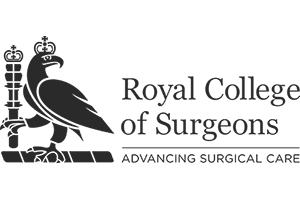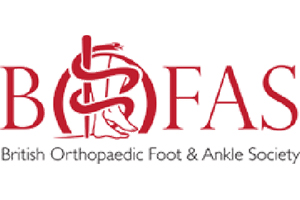Ankle Fusion is an operation to “fuse” or stiffen the ankle joint.
Why would it be done?
Ankle fusions are done for two main reasons:
arthritis of the joint, because of a previous injury that has damaged the joint, a generalised condition such as osteoarthritis or rheumatoid arthritis, or because the joint is just wearing out for some other reason
severe deformity of the rear part of the foot, such as a flat foot, high-arched or “cavus” foot, a club foot or other deformity, in which the ankle joint is also deformed, unstable or damaged.
It is now possible to treat some arthritic ankle joints by replacing the joint, in the same way as arthritic hips and knees can be replaced. However, this is only suitable in older patients without major foot deformities, or people with rheumatoid arthritis or similar diseases. It would not be suitable if:
- you are young (usually under 45) or very physically active
- you have a severe foot deformity
- your ankle is very unstable
- you have had infection in the ankle or the bones around it
- the bone under the ankle (the talus) has collapsed
In these situations a fusion would be advised instead. If you have a severe foot deformity you may be advised to have this corrected at the same time as your ankle fusion by fusing other joints and/or breaking and realigning the foot bones. This would be discussed at the same time as your ankle fusion and we have other information sheets which give information about major foot fusions.
We are sometimes asked if a fusion can be changed to an ankle replacement later. This is not possible, as the foot becomes too stiff for an ankle replacement to work.
We often inject local anaesthetic or steroid into damaged joints, before any surgery is considered, to see whether this helps the pain. In some people, this gets rid of the pain and surgery is not necessary. In others, pain relief does not last but the results of the injection helps us to decide which joints to fuse.
What does it involve?
Ankle fusion in this hospital is nearly always performed by an arthroscopic (telescope) technique. This involves inserting a telescope into the ankle and by using specialised instruments we can remove the joint surface to allow the two bones to heal together. The bones are held rigidly by two screws inserted from the inner aspect of the leg just above the ankle joint. The operation will involve therefore 4 small cuts of approximately 1cm around the ankle.
Some people who have foot deformities have a tight Achilles tendon (“heel cord”), or weak muscles, or both. The Achilles tendon may be lengthened during surgery by making three small cuts in the calf and stretching the tendon.
How long would I be in hospital?
Most people who are reasonably fit can come into hospital on the day of surgery, having had a medical checkup 2-3 weeks beforehand. After surgery your foot may swell and if this happens you will have to rest with your foot raised to help the swelling to go down. This may take anything from 2 days to a week.
Once the swelling goes down and the cuts on your foot are healing your foot will be put in plaster and you can get up with crutches and go home. The physiotherapist will teach you how to walk with crutches. We will get you up as soon as possible! Most people are in hospital for 2 days.
Will I have to go to sleep (general anaesthetic)?
The operation can be done under general anaesthetic (asleep). Alternatively, an injection in the back can be done to make the foot numb while the patient remains awake. Local anaesthetic injections do not always work and in that case you may have to go to sleep if the operation is to be done. Your anaesthetist will advise you about the best choice of anaesthetic for you.
In addition, local anaesthetic may be injected into your leg while you are asleep to reduce the pain after the operation even if you go to sleep for the surgery. You will also be given pain-killing tablets as required.
Will I have a plaster on afterwards?
You will need to wear a plaster or brace from your knee to your toes until the ankle has fused – usually 3-4 months
What will happen after I go home?
By the time you go home you will have mastered walking on crutches without putting weight on your foot. You should go around like this for 2 weeks.
10-14 days after your operation you will be seen again in the clinic. Your plaster will be removed and the cuts and swelling on your foot checked. If all is well you will be put back in plaster or a brace. You should continue walking with your crutches but at this stage you can begin putting a little weight through your foot.
About 6 weeks after your operation you will come back to the clinic for an Xray. If this shows the joint is healing in a good position you can start putting about most of your weight through the plaster or brace. The physiotherapist will teach you how to do this.
You will have further Xrays once 3 months have elapsed. If the Xrays show that the joint is fused enough to take your weight, the plaster will be removed and you can start walking without it. Some people need to stay in plaster longer than 3 months
How soon can I….
Walk on the foot?
As explained above, you should not walk on the foot for at least 2 weeks after surgery. Your surgeon will advise you when you can start taking some weight on the foot.
When you start putting weight on your foot we will give you a special shoe that you can wear over your plaster.
Go back to work?
If your foot is comfortable, and you can keep your foot up and work with your foot in a special shoe, you can go back to work within 3-4 weeks of surgery. On the other hand, in a manual job with a lot of dirt or dust around and a lot of pressure on your foot, you may need to take anything up to six months off work. How long you are off will depend on where your job fits between these two extremes.
Drive?
If you have only your left foot operated on and have an automatic car you can drive within a few weeks of the operation, when your foot is comfortable enough and you can bear weight through it. Most people prefer to wait till the plaster is removed and they can wear a shoe.
Play sport?
After your plaster is removed you can start taking increasing exercise. Start with walking or cycling, building up to more vigorous exercise as comfort and flexibility permit. Obviously, the foot will be stiffer after surgery and you may not be able to do all you could before. However, many people find that because the foot is more comfortable than before surgery they can do more than they could before the operation. Most people can walk a reasonable distance on the flat, slopes and stairs, drive and cycle. Walking on rough ground is more difficult after an ankle fusion because the foot is stiffer. It is rare to be able to play vigorous sports such as squash or football after a ankle fusion.
What can go wrong?
The most serious thing that can go wrong is infection in the bones of the ankle. This only happens in less than 1% of people, but if it does it is serious, as further surgery to drain and remove the infected bone and any infected screws or pins will be necessary. You may then need yet more surgery to get the ankle to fuse in a satisfactory position. The result is not usually as good after such a major problem as if the ankle had healed normally.
About 5-10% of ankle fusions do not heal properly and need a further operation to get the bones to fuse – basically another ankle fusion.
Minor infections in the wounds are slightly more common and normally settle after a short course of antibiotics.
Research shows that 10% of ankle fusions do not heal in exactly the position intended, either because the position achieved at surgery was not exactly right or because the bones have shifted slightly in plaster. Usually this does not cause any problem, although the foot may not look “quite right”. Occasionally the position is a problem and further surgery is required to correct it.
Sometimes the screws become loose as the bone heals and cause pain or irritate your skin. If this happens they can be removed – usually a simple operation which it is often possible to do under local anaesthetic. We find that about 10% of our patients need the screw taken out.





